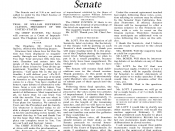On February 5, 1993 President Bill Clinton signed the Family and Medical Leave Act (FMLA) into law, creating a national policy of granting workers up to twelve weeks of unpaid leave for pregnancy, infant care, or to care for themselves or family members in the event of severe injuries and illnesses (Public Law 103-3, 29 U. S. C. & sect; 2601 et. Seq).
The Family and Medical Leave Act generally cover private-sector employers with more than 5 employees, and all public agencies. In order to be eligible for leave, employees must have been employed for at least one year, and have worked 1,250 hours over the prior year. The statute excludes employees at any worksite when the company has fewer than 50 employees working within 75 miles of that site.
FMLA provides for leave in four situations:
-for pregnancy;
-to care for an infant (including newborns, adoptions, and newly-placed foster children)
-to care for a relative with a serious health conditions; or
-to allow the employee to recuperate from his or her own serious health condition.
The idea of a federal leave standard was controversial, and remains so to this day. Supporters argues that, especially as more women entered the workforce, workers should have a legal right to take leave as needed to care for family members who were sick or injured, or to care for infants. Family leave would also allow workers to balance their commitments to work and family, making it easier for companies to retain employees.
The basic impetus behind the law was ultimately a desire to assist families in the midst of a crisis. In floor debate, Representative Connie Morella (R-MD) cited "countless examples of employees who were fired as they or their families prepared to undergo surgery...families have lost their life savings in an effort...


